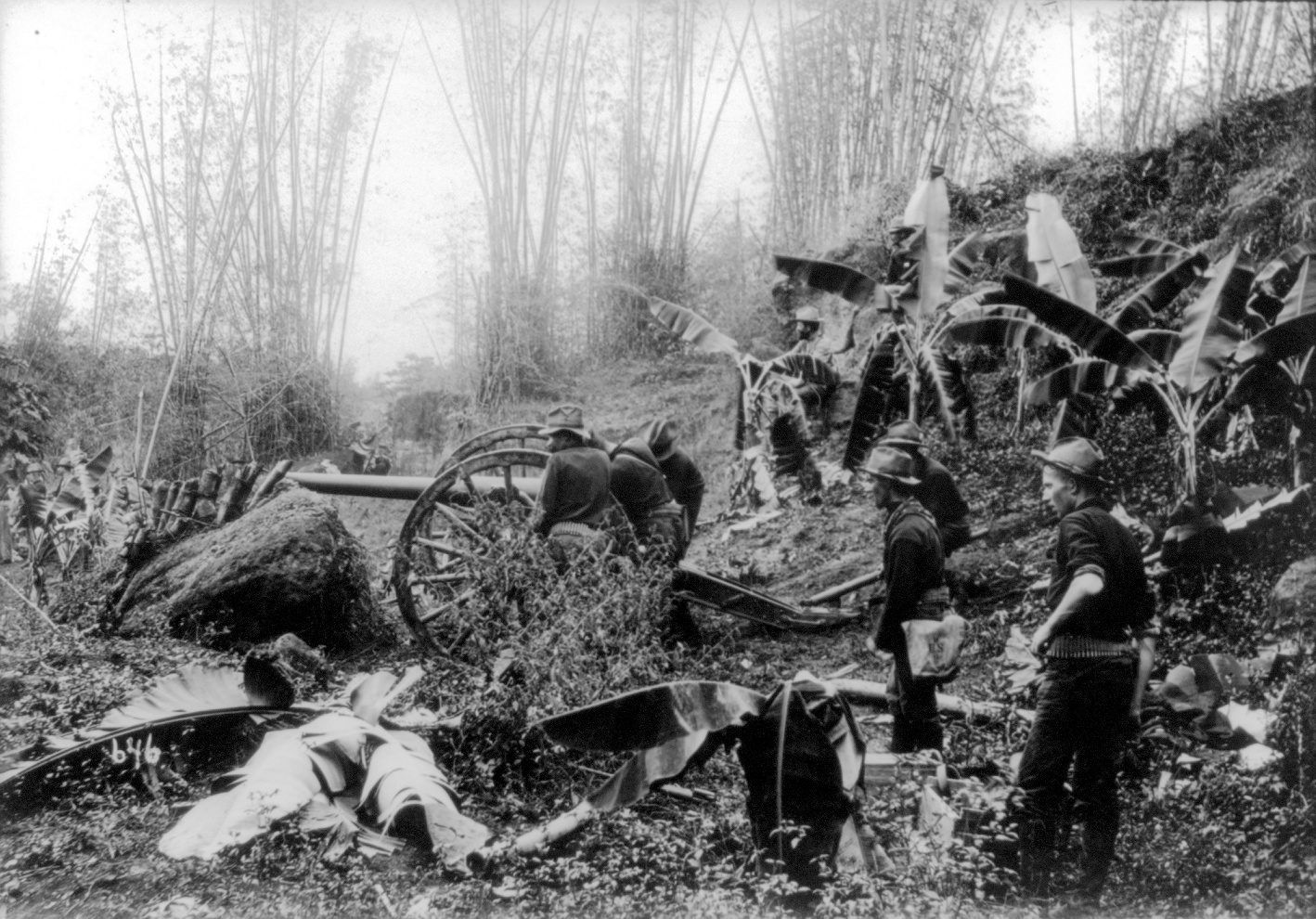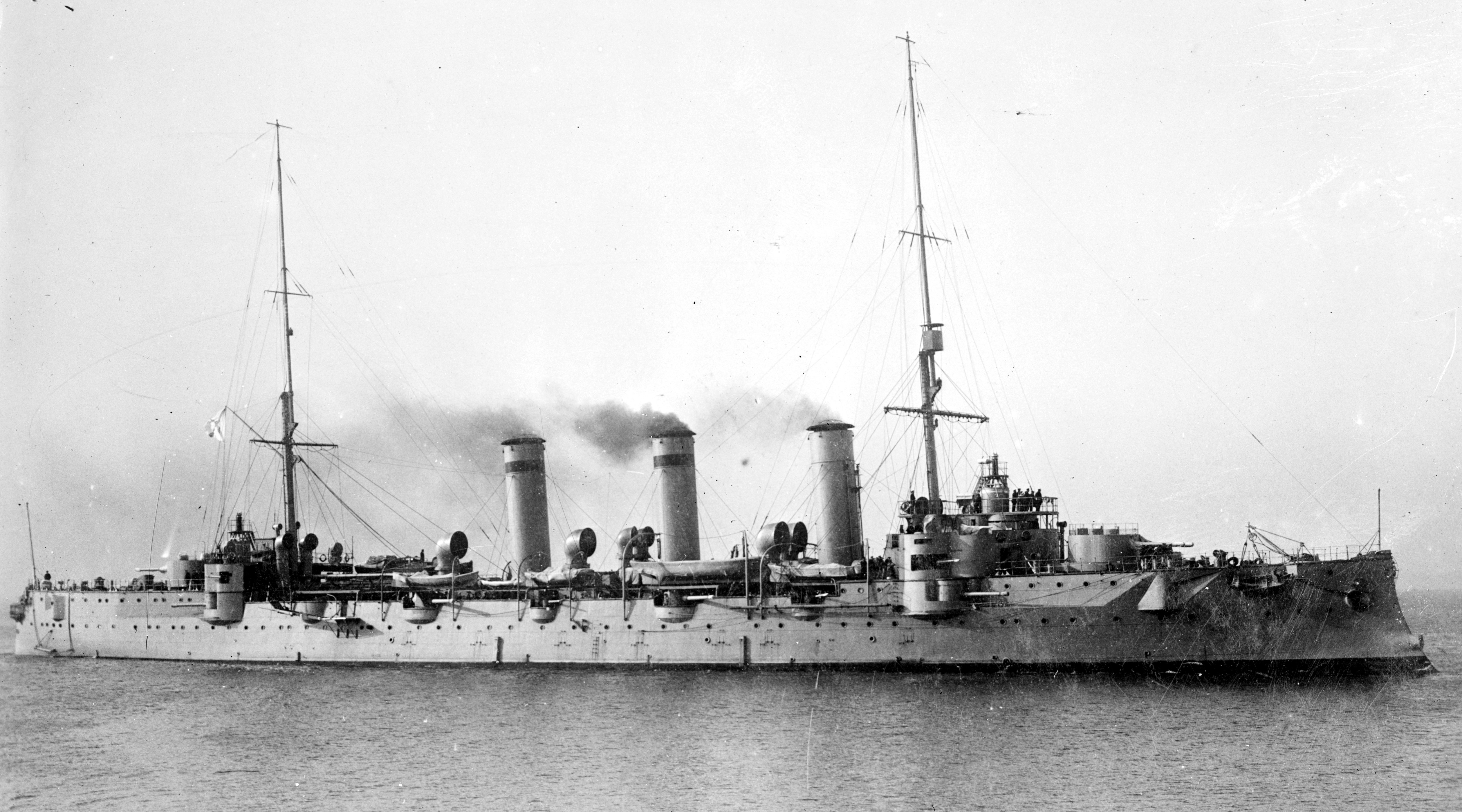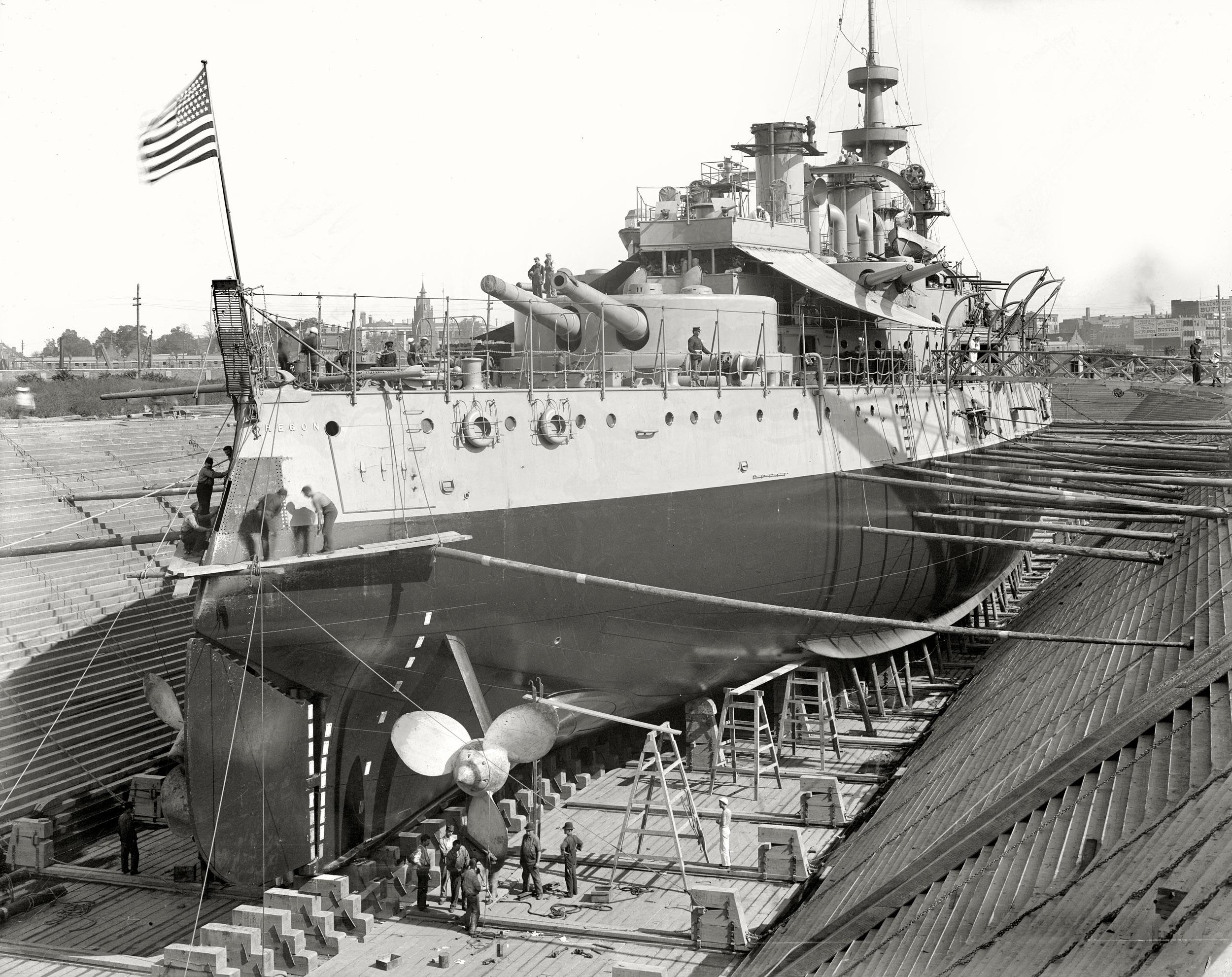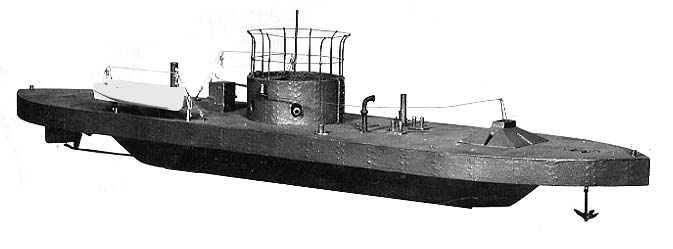|
Battle Of Olongapo
The Battle of Olongapo was fought September 18–23, 1899, during the Philippine–American War. The battle featured both land and sea fighting, of which the objective was the destruction of the single Filipino artillery gun in Olongapo, a menace to American ships crossing the nearby sea. Background During the Spanish–American War that raged throughout 1898, Olongapo was largely ignored by the American Asiatic Squadron, despite the fact that the Spanish had built a naval station there and the Americans had been warned about the presence of Spanish vessels in the area. The reason for this lay in the fact that when Commodore (later Admiral) George Dewey's fleet traversed the area on April 30, 1898, they failed to encounter any Spanish ships and, as a result, Dewey had continued on to Manila Bay where he destroyed the Spanish fleet under Admiral Patricio Montojo. After moving to Manila, the Americans focused on capturing the Spanish port in Cavite, which later became known as San ... [...More Info...] [...Related Items...] OR: [Wikipedia] [Google] [Baidu] |
Philippine–American War
The Philippine–American War or Filipino–American War ( es, Guerra filipina-estadounidense, tl, Digmaang Pilipino–Amerikano), previously referred to as the Philippine Insurrection or the Tagalog Insurgency by the United States, was an armed conflict between the First Philippine Republic and the United States that started on February 4, 1899, and ended on July 2, 1902. The conflict arose in 1898 when the United States, rather than acknowledging the Philippines' Philippine Declaration of Independence, declaration of independence, annexed the Philippines under the Treaty of Paris (1898), Treaty of Paris at the conclusion of the Spanish–American War. The war can be seen as a continuation of the Philippine struggle for independence that began in 1896 with the Philippine Revolution against Spanish East Indies, Spanish rule. Fighting erupted between forces of the United States and those of the Philippine Republic on February 4, 1899, in what became known as the Battle of Manila ... [...More Info...] [...Related Items...] OR: [Wikipedia] [Google] [Baidu] |
Protected Cruiser
Protected cruisers, a type of naval cruiser of the late-19th century, gained their description because an armoured deck offered protection for vital machine-spaces from fragments caused by shells exploding above them. Protected cruisers resembled armored cruisers, which had in addition a belt of armour along the sides. Evolution From the late 1850s, navies began to replace their fleets of wooden ships-of-the-line with armoured ironclad warships. However, the frigates and sloops which performed the missions of scouting, commerce raiding and trade protection remained unarmoured. For several decades, it proved difficult to design a ship which had a meaningful amount of protective armour but at the same time maintained the speed and range required of a "cruising warship". The first attempts to do so, armored cruisers like , proved unsatisfactory, generally lacking enough speed for their cruiser role. During the 1870s the increasing power of armour-piercing shells made armou ... [...More Info...] [...Related Items...] OR: [Wikipedia] [Google] [Baidu] |
1899 In The Philippines
The following lists events that happened during 1899 in the First Philippine Republic, Philippine Republic. Incumbents First Philippine Republic *President of the Philippines, President: Emilio Aguinaldo ''(starting January 23)'' *Prime Minister of the Philippines, Prime Minister: ** Apolinario Mabini ''(January 23 – May 7)'' ** Pedro A. Paterno ''(May 7 – November 13)'' *Malolos Republic, President of the Assembly of Representatives: Pedro A. Paterno U.S. Military Government *Military Governor, Governor: Elwell Stephen Otis Events January * January 23 – Malolos Constitution is proclaimed in Malolos City, Malolos, Bulacan, establishing the First Philippine Republic. Emilio Aguinaldo inaugurated as President of the Republic. February * February 4–February 5, 5 – 12,000 American troops advanced through 2 miles of Filipino front at the Battle of Manila (1899), Battle of Manila. It was the first and largest battle of the Philippine–American War, resulting to 60 Ame ... [...More Info...] [...Related Items...] OR: [Wikipedia] [Google] [Baidu] |
Conflicts In 1899
Conflict may refer to: Arts, entertainment, and media Films * ''Conflict'' (1921 film), an American silent film directed by Stuart Paton * ''Conflict'' (1936 film), an American boxing film starring John Wayne * ''Conflict'' (1937 film), a Swedish drama film directed by Per-Axel Branner * ''Conflict'' (1938 film), a French drama film directed by Léonide Moguy * ''Conflict'' (1945 film), an American suspense film starring Humphrey Bogart * ''Catholics: A Fable'' (1973 film), or ''The Conflict'', a film starring Martin Sheen * ''Judith'' (1966 film) or ''Conflict'', a film starring Sophia Loren * ''Samar'' (1999 film) or ''Conflict'', a 1999 Indian film by Shyam Benegal Games * ''Conflict'' (series), a 2002–2008 series of war games for the PS2, Xbox, and PC * ''Conflict'' (video game), a 1989 Nintendo Entertainment System war game * '' Conflict: Middle East Political Simulator'', a 1990 strategy computer game Literature and periodicals * ''Conflict'' (novel) ... [...More Info...] [...Related Items...] OR: [Wikipedia] [Google] [Baidu] |
Battles Involving The United States
A battle is an occurrence of combat in warfare between opposing military units of any number or size. A war usually consists of multiple battles. In general, a battle is a military engagement that is well defined in duration, area, and force commitment. An engagement with only limited commitment between the forces and without decisive results is sometimes called a skirmish. The word "battle" can also be used infrequently to refer to an entire operational campaign, although this usage greatly diverges from its conventional or customary meaning. Generally, the word "battle" is used for such campaigns if referring to a protracted combat encounter in which either one or both of the combatants had the same methods, resources, and strategic objectives throughout the encounter. Some prominent examples of this would be the Battle of the Atlantic, Battle of Britain, and Battle of Stalingrad, all in World War II. Wars and military campaigns are guided by military strategy, whereas bat ... [...More Info...] [...Related Items...] OR: [Wikipedia] [Google] [Baidu] |
Battles Of The Philippine–American War
A battle is an occurrence of combat in warfare between opposing military units of any number or size. A war usually consists of multiple battles. In general, a battle is a military engagement that is well defined in duration, area, and force commitment. An engagement with only limited commitment between the forces and without decisive results is sometimes called a skirmish. The word "battle" can also be used infrequently to refer to an entire operational campaign, although this usage greatly diverges from its conventional or customary meaning. Generally, the word "battle" is used for such campaigns if referring to a protracted combat encounter in which either one or both of the combatants had the same methods, resources, and strategic objectives throughout the encounter. Some prominent examples of this would be the Battle of the Atlantic, Battle of Britain, and Battle of Stalingrad, all in World War II. Wars and military campaigns are guided by military strategy, whereas bat ... [...More Info...] [...Related Items...] OR: [Wikipedia] [Google] [Baidu] |
USS Oregon (BB-3)
USS ''Oregon'' (BB-3) was the third and final member of the of pre-dreadnought battleships built for the United States Navy in the 1890s. The three ships were built as part of a modernization program aimed at strengthening the American fleet to prepare for a possible conflict with a European navy. Designed for short-range operations in defense of the United States, the three ''Indiana''-class ships had a low freeboard and carried a main battery of four guns in a pair of gun turrets. ''Oregon'' and her sister ships were the first modern battleships built for the United States, though they suffered from significant stability and seakeeping problems owing to their small size and insufficient freeboard. After entering service in 1896, ''Oregon'' briefly served with the Pacific Squadron before being transferred to the East Coast of the United States as tensions with Spain over Cuba grew in early 1898. She completed a journey around South America in the span of 66 days, arrivin ... [...More Info...] [...Related Items...] OR: [Wikipedia] [Google] [Baidu] |
Emilio Aguinaldo
Emilio Aguinaldo y Famy (: March 22, 1869February 6, 1964) was a Filipino revolutionary, statesman, and military leader who is the youngest president of the Philippines (1899–1901) and is recognized as the first president of the Philippines and of an Asian constitutional republic. He led Philippine forces first against Spain in the Philippine Revolution (1896–1898), then in the Spanish–American War (1898), and finally against the United States during the Philippine–American War (1899–1901). Aguinaldo remains a controversial figure in Filipino history. Though he has been recommended as a national hero of the Philippines, many have criticized him for the deaths of the revolutionary leader Andrés Bonifacio and general Antonio Luna, as well as his collaboration with the Japanese Empire during their occupation of the Philippines in World War II. "Aguinaldo's collaboration with Japan began with his contact with Gen. Masami Maeda, Homma's chief of staff. ..Aguinaldo ... [...More Info...] [...Related Items...] OR: [Wikipedia] [Google] [Baidu] |
Guncotton
Nitrocellulose (also known as cellulose nitrate, flash paper, flash cotton, guncotton, pyroxylin and flash string, depending on form) is a highly flammable compound formed by nitrating cellulose through exposure to a mixture of nitric acid and sulfuric acid. One of its first major uses was as guncotton, a replacement for gunpowder as propellant in firearms. It was also used to replace gunpowder as a low-order explosive in mining and other applications. In the form of collodion it was also a critical component in an early photographic emulsion, the use of which revolutionized photography in the 1860s. Production The process uses a mixture of nitric acid and sulfuric acid to convert cellulose into nitrocellulose. The quality of the cellulose is important. Hemicellulose, lignin, pentosans, and mineral salts give inferior nitrocelluloses. In precise chemical terms, nitrocellulose is not a nitro compound, but a nitrate ester. The glucose repeat unit (anhydroglucose) within the ce ... [...More Info...] [...Related Items...] OR: [Wikipedia] [Google] [Baidu] |
Gunboat
A gunboat is a naval watercraft designed for the express purpose of carrying one or more guns to bombard coastal targets, as opposed to those military craft designed for naval warfare, or for ferrying troops or supplies. History Pre-steam era In the age of sail, a gunboat was usually a small undecked vessel carrying a single smoothbore cannon in the bow, or just two or three such cannons. A gunboat could carry one or two masts or be oar-powered only, but the single-masted version of about length was most typical. Some types of gunboats carried two cannons, or else mounted a number of swivel guns on the railings. The small gunboat had advantages: if it only carried a single cannon, the boat could manoeuvre in shallow or restricted areas – such as rivers or lakes – where larger ships could sail only with difficulty. The gun that such boats carried could be quite heavy; a 32-pounder for instance. As such boats were cheap and quick to build, naval forces favoured swarm ... [...More Info...] [...Related Items...] OR: [Wikipedia] [Google] [Baidu] |
USS Baltimore (C-3)
The fourth USS ''Baltimore'' (C-3) (later CM-1) was a United States Navy cruiser, the fifth protected cruiser to be built by an American yard. Like the previous one, , the design was commissioned from the British company of W. Armstrong, Mitchell, and Company of Newcastle. ''Baltimore'' was an all-around improvement on ''Charleston'', somewhat larger with more guns, thicker armor, and better machinery.Gardiner and Chesneau, p. 151Bauer and Roberts, p. 143Friedman, pp. 25, 459 Design ''Baltimore'' was built to plans purchased from Armstrong, a British manufacturer, which were similar to an unsuccessful Armstrong bid for the Spanish cruiser ''Reina Regente''. Unlike the preceding ''Charleston'', these plans included a modern triple expansion engine designed by Humphrys, Tennant & Co. ''Baltimore''s initial cost for hull and machinery was $1,546,172.13. ''Baltimore'' was armed with four /35 caliber Mark 4 guns in sponsons on either side of the bow and stern, and six /30 ca ... [...More Info...] [...Related Items...] OR: [Wikipedia] [Google] [Baidu] |
Monitor (warship)
A monitor is a relatively small warship which is neither fast nor strongly armored but carries disproportionately large guns. They were used by some navies from the 1860s, during the First World War and with limited use in the Second World War. The original monitor was designed in 1861 by John Ericsson, who named it . They were designed for shallow waters and served as coastal ships. The term also encompassed more flexible breastwork monitors, and was sometimes used as a generic term for any turreted ship. In the early 20th century, the term was revived for shallow-draught armoured shore bombardment vessels, particularly those of the Royal Navy: the s carried guns firing heavier shells than any other warship ever has, seeing action (albeit briefly) against German targets during World War I. The ''Lord Clive'' vessels were scrapped in the 1920s. The term "monitor" also encompasses the strongest of riverine warcraft, known as river monitors. During the Vietnam War these much sm ... [...More Info...] [...Related Items...] OR: [Wikipedia] [Google] [Baidu] |


.jpg)





._Starboard_bow%2C_1891_-_NARA_-_512896.jpg)
